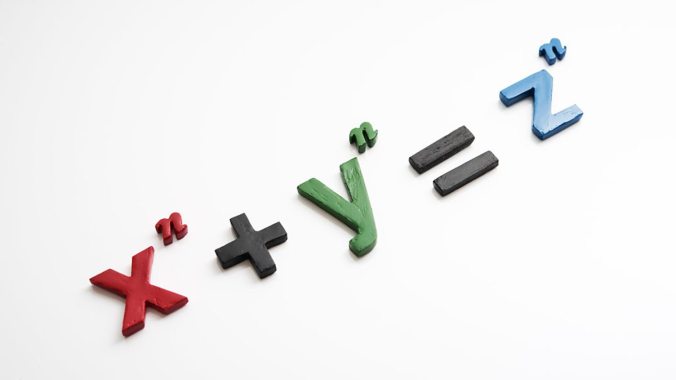Why seemingly simple aspects can in fact be extremely complex and how to handle such situations
 Image: creative commons. In number theory, Fermat’s Last Theorem* (sometimes called Fermat’s conjecture) states that no three positive integers a, b, and c satisfy the equation an + bn = cn for any integer value of n greater than 2. The cases n = 1 and n = 2 have been known to have infinitely many solutions since antiquity.
Image: creative commons. In number theory, Fermat’s Last Theorem* (sometimes called Fermat’s conjecture) states that no three positive integers a, b, and c satisfy the equation an + bn = cn for any integer value of n greater than 2. The cases n = 1 and n = 2 have been known to have infinitely many solutions since antiquity.
Highlight: “Fish exhibit extremely high propulsive efficiency and excellent maneuverability. Designers are looking to exploit these traits by mimicking fish motion. A prototype robotic fish has been developed at The University of Auckland modeled on the carangiform mode of swimming…the algorithms involved in such motion control are complex as they have to deal with highly dynamic systems…”
Insight: Fermat’s last theorem appears at first sight to be simple especially compared with far more complex equations commonly used in mathematics or physics. Yet, this seemingly simple expression has for long been considered one of mathematics most complex problems. As matter of fact, the first successful proof was only released in 1994 by Andrew Wiles, and formally published in 1995, after 358 years of effort by mathematicians!
Often businesses are faced with similar situations where the complexity of a situation is underestimated. Underestimating a problem can have severe consequences for different reasons such as logistics, safety or budgeting.
For instance lets illustrate this point with the following situation: an airplane manufacturer is about to release a larger than usual aircraft to the mass market. After over ten years of intense preparations, complex problems solving and state of the art engineering the product is finally ready and the entire team is finalizing basic logistics. During one of the meetings the procedure of bringing some parts manufactured in other locations to the main assembly site is raised: the main fuselage, which is rather large comes in one single piece and is too big to fit in specialized planes normally used for the transport of smaller fuselage parts. Because of this, the only way to bring in the fuselage is by road or train. The team manager, not seeming too worry about it, asks the simple question of whether the dimensions of the fuselage would allow to bring it by road. After some detail analysis the answer comes out as a yes but with extremely tight error margins at some points which raises concerns from various members of the team. The manager more worried of having to announce further delays to the direction takes it as feasible and as a minor problem. After the first orders start to come in, the process of assembly starts and the fuselage is brought in as planned by road; this is when the realization that the problem was not so simple starts to kick-in through a range of unforeseen issues:
- At some stages the fuselage must pass trough a small village and the margin or error (the distance between the fuselage and road side buildings) in turns is less than 10cm! A few safety misses occur and any bump to the fuselage would have serious repercussions as detailed inspections for safety would be required. To prevent this from happening a team of experts must also supervise the operations at all time which is rather costly;
- Due to the size and sensitivity of the delivery the entire stretch of road must be closed to traffic and therefore can only be done late at night as it is a national road. Villagers complain of noise issues and other disturbances;
- The road is not meant to carry such a weight and shortly after these operations begin, the pavement starts to crack which requires maintenance. The department authorities complain that they shouldn’t be the ones paying for the repair costs;
- It takes longer to deliver due to the complexity of the process which requires to operate at very low speeds;
- and many other issues which add on…
In the end the mounting problems force the company to finance the construction of a specially designed road to go around the village, that’s over 6 miles of road. The cost of this “little problem” ends up amounting to USD 450 millions!
Are you faced with certain obstacles going forward? If so, perhaps take the time to properly estimate the complexity of these problems as failure to do so could have serious and costly consequences on your project…
More information: here
What is Biomimetics: the field of gaining inspiration from nature first to solve some of our most difficult challenges. Instead of coming up with our own solutions to a problematic, the odds are that species or natural systems on the planet already offer an ultimate solution. This simple fact is also another strong case to preserve species at all cost as the intellectual heritage contained within or through the study of species is both irreplaceable and invaluable…
